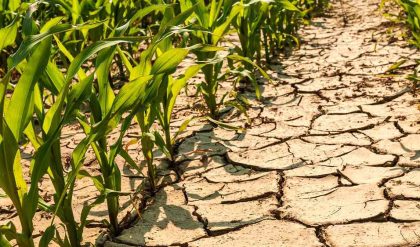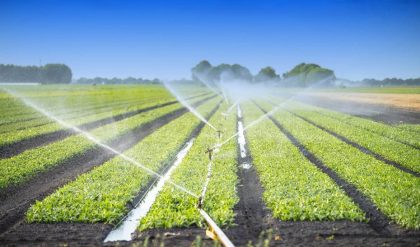Broadly classified in two groups:
A)Preventive Measures.
B) Curative or Control Measures which includes:
i. Mechanical
ii.Cropping or Cultural
iii.Biological &
iv.Chemical
A) Preventive Measures: In this, the weeds are prevented from its multiplication, introduction & nipped off the buds. It consists of:
1) Use clean seed,
2) Use well decomposed FYM/Compost,
3) Cut the weeds before seeding,
4) Remove weed growth or keep irrigation & drainage channels clean or free from seeds,
5) Avoid feeding of grain screenings, hay or fodder containing weed seeds without destroying their viability by grinding or cooking,
6) Avoid use of sand or soil from weed infested areas to clean or cultivated areas,
7) Avoid allowing castles to move from weed infested areas to clean or cultivated areas,
8) Clean all the farm implements & machinery properly after their use in infested areas & before using in clean areas,
9) Keep farm fences, roads & bunds clean or free from weeds.
10) Watch seedlings in nurseries carefully so that they do not get mixed with weed seedlings & get carried to the fields.
B) Curative Measures: These measures are followed to remove or to smother the weed growth & further multiplication. It includes:
i) Mechanical methods (Physical): It comprises:
1) Hand pulling;
2) Hand weeding;
3) Burning;
4) Flooding;
5) Hoeing;
6) Tillage;
7) Moving;
8) Smothering with non-living material (mulching). Burning of seed bed is called as ‘rabbing’.
ii) Cropping and competition methods (Cultural): “One who establish first/early, will suppress other.” Therefore, the cultural practices are so managed that the crop plants should establish early and grow faster ahead of the weeds.
It includes:
1) Crop roations: It checks the free growth of weed due to change of crops season to season.
2) Kind of crop: Groundnut covering crops like legumes will smother the weed growth. E.g.: sun hemp, groundnut.
3) Use of fertilizers: Application of optimum doses of fertilizers to crop will help to grow faster.
4) Date & rate of planting or sowing: Sowing of crops at proper time with optimum seed rate will help the crop to cover the ground & will make the weeds deprive of light.
iii) Biological methods: It includes the use of living organisms for suppressing or controlling the weeds. Plant, animal or micro organisms may be used for destruction of weeds. These are called as bioagents which feed on only the weeds and not on crop plants. E.g.: Prickly pear or Nagphana weed in South India was controlled by Conchineal insects. (Dactlopius tomentosus). In Australia (Hawaii Islands) several kinds of moths were used to control Lantana Camara which eats the flowers & fruits. This method is very efficient & economical provided right type of predators, parasites or pathogens which even under starvation conditions will not feed upon cultivated crops are found out & introduced.
iv) Chemical methods: This is very effective in certain cases and has a great scope provided the chemicals are cheap, efficient & easily available. The chemicals used for weed control & which suppress or destroy the growth of weeds, called as herbicide. These either help in killing the weeds or in inhibiting their growth.E.g.2, 4-D, Atrazine, Glyphosate, etc.
Types of herbicide:
i) Selective herbicides are those which kill only weeds without injuring crop plants.
ii) Non-selective herbicides are those which kill all kinds of vegetations i.e. weed and crop plant.
iii) Contact herbicides kill all the plant parts which may get covered by the chemical by directly killing the plant cells. These chemicals are effective against annuals particularly when they are young but not perennials.
iv) Translocated/Systemic herbicides are first absorbed in the foliage or through roots and are then translocated to other parts of the plant. Or Kill plants after their absorption by accelerating or retarding the metabolic activities of plants. These are more effective in destroying deep rooted perennials.
Soil sterilents: are non-selective herbicides and have to be applied into the soil. They make the soil sterile and incapable of supporting any plant growth. As such any weed seeds or weed seedlings present in the soil are killed.
Based on relative time of application to weed emergence the herbicides are classified as:
I) Pre-plant applied (Before planting of crop)
II) Pre-emergence (Before emergence of weeds)
III) Post-emergence (After emergence of weeds)
Acid equivalent (a.e.) refers to that part of the formulation that theoretically can be converted into the acid.
Active ingredient (a.i.) is that part of the chemical formulation which is directly responsible for the herbicidal effects.
Pre and post-emergence treatments to control weeds: Both the terms, Pre and post-emergence treatments are related with time of application of herbicides for control of weeds.
Pre-emergence treatment or application of herbicides: Application of herbicides after sowing of crop but before emergence of crop and weeds is called pre-emergence application. It is done from first to fourth day of sowing and only selective herbicides are used. Generally germinating weeds are killed by pre-emergence application and gives competitive advantage of crop. E.g.: Pre-emergence application of Atrazine @ 0.5 to 2.5 kg/ha in sugarcane, Jowar, Alachlor @ 1.5 to 2.5 kg ai/ha in Groundnut, Duiron @ 2.0 kg ai/ha or Oxadiazon @ 1.5 kg ai/ha in cotton.
Post-emergence application of herbicides: Application of herbicides after emergence of crop is called post-emergence application. It is generally resorted to when the crop has grown sufficiently to tolerate herbicides and to kill weeds that appear late in the crop. Generally, it is done about 30-40 days after sowing. For example, application of Stam F34 @ 2 kg/ha or MCR 1 kg/ha in paddy 3 weeks after transplanting, 2,4-D @ 0.4 kg/ha in Wheat after 4-8 leaf stage, Pendimethalin @ 0.75 to 2.0 kg ai/ha in rice after 3-5 DAT, Isoproturon @ 1.0 kg ai/ha 30 – 35 days after sowing of Wheat.





